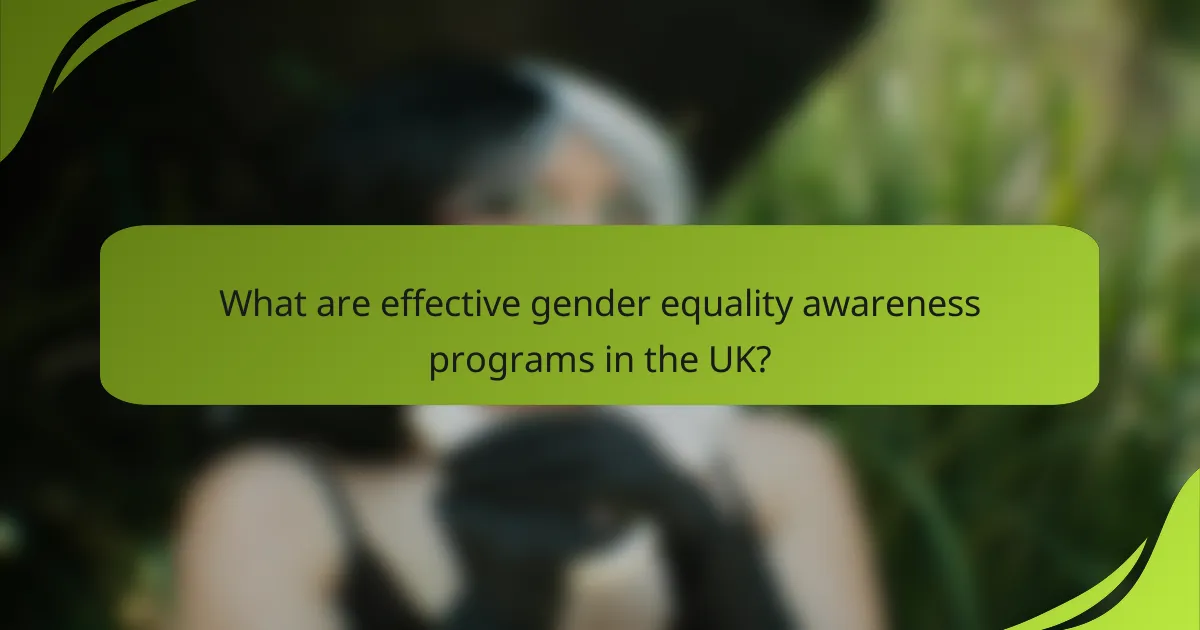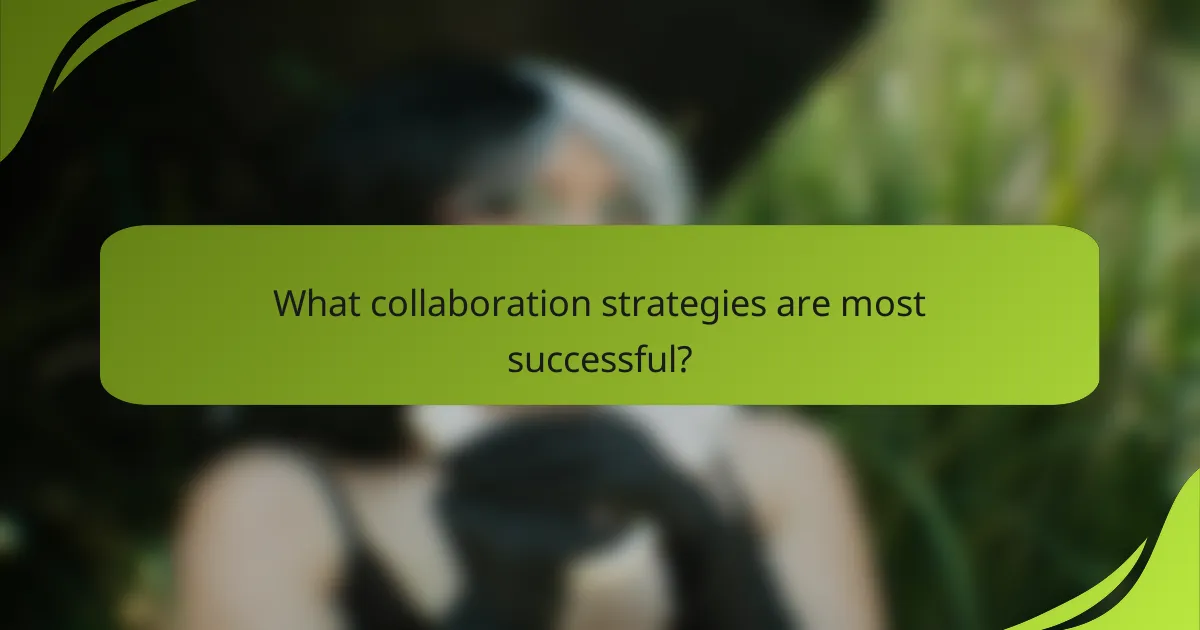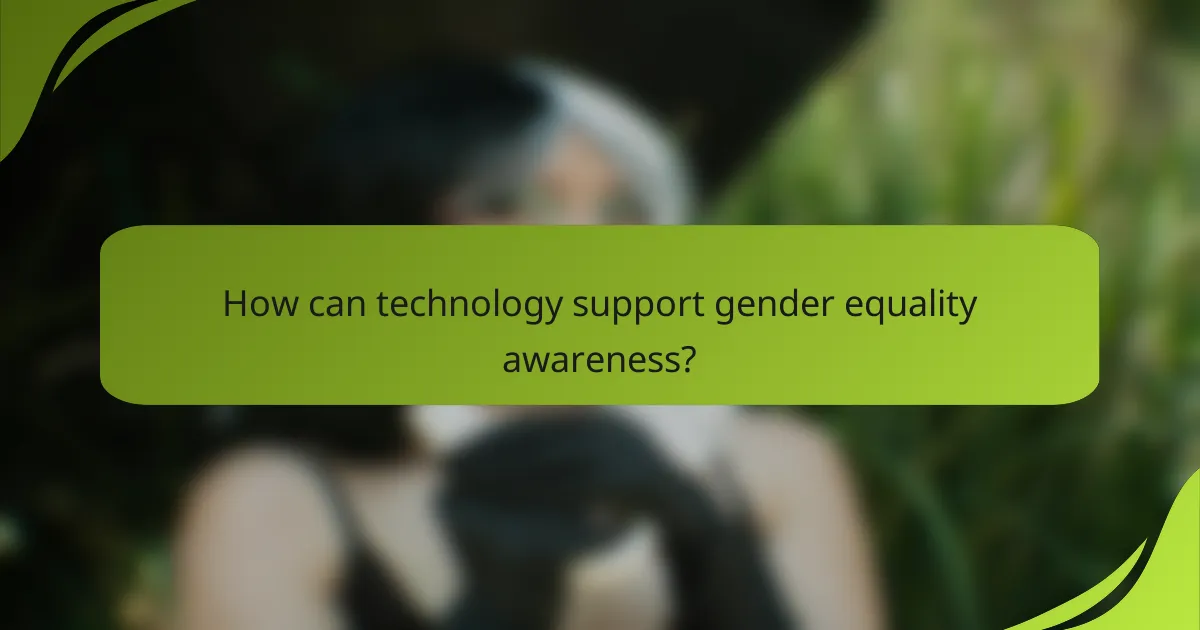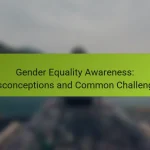Gender equality awareness programs in the UK play a crucial role in educating individuals and organizations about gender issues while promoting equal opportunities and inclusive environments. By fostering partnerships among government bodies, NGOs, and the private sector, these initiatives leverage diverse resources and expertise to enhance their impact and reach. Successful collaboration strategies focus on engaging community members and building strong alliances, ultimately creating a sense of ownership and commitment to gender equality efforts.

What are effective gender equality awareness programs in the UK?
Effective gender equality awareness programs in the UK focus on educating individuals and organizations about gender issues, promoting equal opportunities, and fostering inclusive environments. These programs often involve collaboration among government bodies, non-governmental organizations (NGOs), and private sector companies to maximize impact.
UK Government initiatives
The UK government has implemented various initiatives aimed at promoting gender equality, such as the Gender Equality Strategy and the Equality Act 2010. These frameworks provide guidelines for organizations to create equitable workplaces and ensure compliance with gender equality standards.
Programs like the Women’s Business Council work to increase female representation in leadership roles across different sectors. Additionally, government funding is often available to support projects that aim to raise awareness and drive change in gender equality practices.
NGO-led campaigns
Non-governmental organizations play a crucial role in advancing gender equality through awareness campaigns and educational programs. Initiatives like the Fawcett Society and Women’s Aid focus on raising public awareness about gender-based violence and discrimination.
These campaigns often utilize social media, workshops, and community events to engage the public and encourage discussions about gender equality. Collaborations with schools and local communities help to reach a broader audience and foster grassroots support for gender equality initiatives.
Corporate social responsibility programs
Many companies in the UK are integrating gender equality into their corporate social responsibility (CSR) strategies. This includes developing policies that promote diversity and inclusion, such as flexible working arrangements and mentorship programs for women.
Organizations may also participate in initiatives like the UN Women’s Empowerment Principles, which guide businesses in promoting gender equality in the workplace. By publicly committing to these principles, companies can enhance their reputation and attract a diverse workforce while contributing to broader societal change.

How can partnerships enhance gender equality initiatives?
Partnerships can significantly boost gender equality initiatives by leveraging diverse resources, expertise, and networks. Collaborating with various stakeholders allows for a more comprehensive approach, increasing the reach and impact of programs aimed at promoting gender equality.
Collaboration with local businesses
Partnering with local businesses can provide essential support for gender equality initiatives through funding, resources, and community engagement. Businesses can offer sponsorships for events, provide venues for workshops, or even implement gender-sensitive policies within their own operations.
To maximize the effectiveness of these collaborations, organizations should identify businesses that share similar values and goals. Establishing clear expectations and mutual benefits can lead to sustainable partnerships that enhance community involvement and awareness.
Engagement with educational institutions
Engaging with educational institutions is crucial for fostering long-term awareness and understanding of gender equality. Schools and universities can serve as platforms for workshops, seminars, and discussions that educate students about gender issues and empower them to advocate for change.
Creating programs that integrate gender equality into the curriculum can help instill these values in students from an early age. Collaborations with educators can also lead to research opportunities that highlight the importance of gender equality in various fields, further promoting informed dialogue and action.

What collaboration strategies are most successful?
Successful collaboration strategies for gender equality awareness programs often involve building strong partnerships and engaging community members. These strategies enhance resource sharing, increase outreach, and foster a sense of ownership among stakeholders.
Cross-sector partnerships
Cross-sector partnerships involve collaboration between various entities, such as government agencies, non-profits, and private businesses. These partnerships leverage diverse expertise and resources, creating a more comprehensive approach to gender equality initiatives.
For example, a non-profit focused on women’s rights might partner with a local business to sponsor workshops that educate employees on gender bias. This not only raises awareness but also encourages businesses to adopt inclusive practices.
When forming cross-sector partnerships, it’s essential to establish clear goals and roles for each partner. Regular communication and mutual accountability can help ensure that all parties remain committed to the shared objectives.
Community involvement strategies
Community involvement strategies prioritize engaging local populations in gender equality initiatives. This approach fosters a sense of belonging and empowers individuals to take action within their communities.
Effective strategies may include organizing community forums, workshops, or educational campaigns that address local gender issues. For instance, hosting a series of discussions in schools can raise awareness among students and parents about gender stereotypes and their impact.
To maximize community involvement, consider using social media platforms to promote events and gather feedback. Additionally, providing incentives for participation, such as certificates or small rewards, can encourage more individuals to engage actively in these programs.

What are the key implementation steps for gender equality programs?
The key implementation steps for gender equality programs include conducting a needs assessment, engaging stakeholders, and establishing a robust monitoring and evaluation framework. These steps ensure that programs are tailored to specific contexts and effectively measure their impact.
Needs assessment
A needs assessment identifies the specific gender equality issues within a community or organization. This process involves gathering data through surveys, interviews, and focus groups to understand the current situation and gaps in gender equity.
Consider using both qualitative and quantitative methods to gather comprehensive insights. For instance, a combination of statistical data on gender representation and personal stories can provide a fuller picture of the challenges faced.
Stakeholder engagement
Engaging stakeholders is crucial for the success of gender equality programs. This involves identifying key individuals and groups, such as community leaders, NGOs, and government representatives, who can influence or support the initiative.
Effective engagement strategies include organizing workshops and forums to facilitate dialogue and collaboration. Regular communication and feedback loops can help maintain stakeholder interest and commitment throughout the program’s lifecycle.
Monitoring and evaluation
Monitoring and evaluation (M&E) are essential for assessing the effectiveness of gender equality programs. Establish clear indicators and benchmarks to track progress over time, ensuring that data collection methods are consistent and reliable.
Consider implementing both formative and summative evaluations. Formative evaluations can provide ongoing feedback during implementation, while summative evaluations assess overall impact after program completion. This dual approach helps refine strategies and demonstrate accountability to stakeholders.

What role do international organizations play in gender equality?
International organizations are crucial in promoting gender equality by providing frameworks, resources, and partnerships that support initiatives worldwide. They facilitate collaboration among governments, NGOs, and communities to implement effective strategies and policies aimed at reducing gender disparities.
UN Women initiatives
UN Women leads various initiatives focused on empowering women and promoting gender equality globally. Programs such as the HeForShe campaign encourage men to advocate for gender equality, while the Generation Equality Forum mobilizes resources and commitments from diverse stakeholders.
Additionally, UN Women supports countries in implementing laws and policies that protect women’s rights, providing technical assistance and capacity-building programs. These initiatives often include training workshops, awareness campaigns, and funding opportunities aimed at enhancing women’s participation in decision-making processes.
Global partnerships for gender equality
Global partnerships play a vital role in advancing gender equality by uniting diverse organizations and stakeholders. Collaborations between governments, private sectors, and civil society can amplify efforts and share best practices, leading to more impactful outcomes.
Examples of successful partnerships include the Global Fund for Women and the Gender Equality Advisory Council, which focus on funding projects and advocating for policy changes. These partnerships often leverage resources and expertise, creating a more comprehensive approach to tackling gender issues across different regions.

How can technology support gender equality awareness?
Technology can significantly enhance gender equality awareness by facilitating communication, education, and outreach. Digital platforms enable organizations to reach broader audiences, share resources, and foster collaboration among stakeholders.
Digital campaigns
Digital campaigns leverage social media, websites, and email to promote gender equality initiatives. These campaigns can raise awareness, engage communities, and mobilize support through targeted messaging and storytelling. Effective campaigns often utilize visuals and personal narratives to resonate with diverse audiences.
To maximize impact, organizations should consider using data analytics to track engagement and adjust strategies accordingly. Tools like Google Analytics or social media insights can provide valuable feedback on what content resonates most with users, allowing for real-time optimization.
Common pitfalls include failing to tailor messages to specific demographics or neglecting to follow up with audiences after initial engagement. A successful digital campaign should include a clear call to action, encouraging individuals to participate in discussions, share content, or support initiatives financially.

